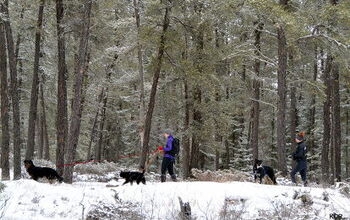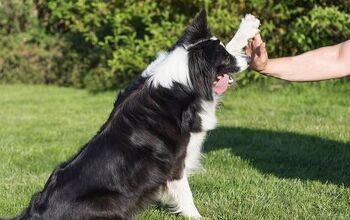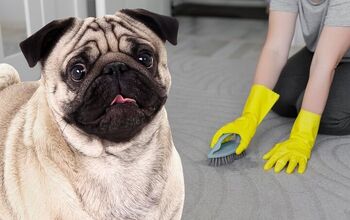How to Quickly Cool Your Dog Down

Like every other mammal, dogs can overheat. When your dog heats up, you need to act quickly to cool him down. Don’t panic, here’s how to do it
You aren’t the only one who has a hard time dealing with blistering summer heat. Your favorite pooch can also be rather sensitive to that excess warmth. In fact, summer can be a dangerous time for your doggo if you aren’t careful. Heatstroke is an incredibly dangerous (often even fatal) condition that affects dogs of all shapes, sizes, and ages throughout the summer months. There is one common instance of this problem that is widely discussed. You have probably already learned about the dangers of leaving your dog in a hot car with the windows rolled up. However, heatstroke can occur at any time if your dog does not have proper access to shade or water. Sadly, it’s all too easy for many dog owners to ignore the signs that their pup is suffering through the summer. This article will offer you some helpful tips on what to do if you suspect your dog is suffering from heatstroke.
Signs That Your Dog Is Overheating
It is normal for your dog to be panting on a hot summer day, but if you aren’t careful your dog can quickly escalate from feeling a little bit warm to suffering from the initial stages of heatstroke. Some of the signs of heatstroke to keep an eye out for include:
- Excessive panting
- Rapid heart rate
- Excessive salivation/drooling
- Pale or gray gums
- Weakness or confusion
- Vomiting
- Diarrhea
If you notice your dog exhibiting any of these signs, it is essential that you take immediate action to cool him down. Dogs that do not receive prompt treatment for heatstroke can quickly progress to seizures, coma or even cardiac arrest. It’s not an exaggeration to say that this can even cause death in a matter of minutes. This is no joke. Heatstroke is a huge risk in many canines.
Some Ways to Cool Your Dog Down
While cooling your dog down is very important if he is suffering from heatstroke, you do need to be careful about doing it too quickly. Sure, it’s important to monitor these things, but it’s also important not to overreact and cause your dog any unnecessary distress. You should not, for example, dump your dog into a tub of ice water because this could cause the capillaries in his skin to constrict and that will prevent the cooling of his internal organs. Beyond those scientific facts, it’s also just not nice and the Ice Bucket Challenge is so 2014. Instead, you should try one of the following methods:
Wet Towel
Soak a towel in cool water and drape it over your dog’s body to cool him slowly. If your dog is very small, it is recommended that you use lukewarm rather than cold water to avoid cooling him too quickly. Little pups are more sensitive than big boys after all.
Air Conditioning/Fan
If your dog is in the very beginning stages of heatstroke, moving him indoors to an air-conditioned area or placing a fan in front of him may be enough to cool him down. It is also recommended that you let your dog lie on a cool surface such as tile or wood floors rather than carpet to speed up the cool-down process.
Pool of Water
The only place dogs are capable of sweating is through the pads of their feet, so having your dog stand in a pool or bathtub filled with a few inches of cool water can help to cool him down. Remember, the water should be lukewarm or cool, never cold (and do not use ice cubes to cool the water or it will become far too cold). You need to be sensitive to your pup’s needs and don’t want to cause a whole new set of temperature-related problems.
Drinking Water
While you are using one of the methods outlined above to cool your dog down, you should also give him fresh water to drink. Though ice water is not inherently dangerous for dogs, it is best to avoid it in situations where heatstroke is a factor because you don’t want to cool your dog down too quickly. It is also important that you make sure your dog doesn’t drink the water too fast or he could swallow air which will contribute to bloat. Try to ease them back down by gently drinking some water.
While cooling your dog down, it is also a good idea to monitor his body temperature with a thermometer, which you should have to monitor his health in general. Once your doggy’s temperature returns to 103°F, you do not need to cool him down any further. In fact, it is a good idea to dry off your dog off at this point and even cover him up to ensure that he doesn’t continue to lose body heat. You should also take your dog to see the veterinarian as soon as possible after a heat stroke incident to ensure that no internal damage has occurred and that there are no further complications. It’s amazing how quickly heat stroke can lead to other even more substantial health problems in dogs.
How to Prevent Heat Stroke in Dogs
Knowing what to do when your dog is suffering from heatstroke is great, but wouldn’t it be even better to never have to deal with this problem in the first place? That’s where prevention of heatstroke in dogs comes into play. By knowing how to prevent this problem, you can take steps to keep your dog happy and healthy, regardless of the temperature outside. It’s always better to avoid these sorts of issues rather than struggling to cure them.
Thankfully, it isn’t too hard to prevent heatstroke in dogs. In fact, a few common-sense measures can go a long way to keeping your doggy happy during the summer heat. For example, if it’s hot and humid outside, you don’t want to force your dog to spend too much time out there. You also certainly shouldn’t leave him alone outdoors for long periods of time. Let him stay inside the house where it’s cool and where he can be comfortable with the rest of the family.
Sure, just like on any other day you’ll want your pupper to get in some outdoor activity (such as going for a walk or even playing in the yard). That’s vital to get in your dog’s exercise requirements in for the day and of course, to let him go to the bathroom. So, don’t lock your dog up during a particularly hot day, just reduce the amount of time he spends in the heat and humidity. This will go a long way towards preventing your pooch from overheating. Also, while your dog is outside, make sure that he has access to water and shade at all times. Check his behavior and note if he’s starting to feel too hot and uncomfortable. Dogs should not be left unsupervised during extreme summer heat. It’s simply too dangerous.
A wonderful way to get your pup to enjoy some physical activity on hot days while still reducing the odds of heat stroke is swimming. That is, if your dog likes to swim of course. If he doesn’t like swimming, there are other ways to play in the water. For example, you could fill a kiddie pool with some water for your dog to splash around in. Or, you could let your dog run through the sprinkler in your yard. Dogs love this sort of thing and it’s good for them on hot days as well.
When it’s really hot or humid out, reducing the time that you usually take your dog for a walk can be quite helpful for both of you. After all, you don’t want to be sweating in the heat either, right? Getting your dog’s walks in during the early morning hours or after the sun goes down can be a good way to limit the amount of time that he spends in the sunshine while also reducing the odds of the pupper overheating. No matter what, on hot days, it might be best to limit yourselves to a brisk walk, rather than a jog or a run. Moving around too fast can also cause odds of overheating and dehydration to skyrocket out of control. It’s also important to always bring some water with you on warm days you that so your fur baby can drink whenever he feels the need. This can be extremely helpful in keeping him hydrated and is always worth considering.
Finally, it goes without saying that an animal should never be left alone in a car with the windows up, even on mild days when you think the temperature isn’t that hot. The inside of the vehicle can become extremely hot and stifling in no time. There’s a reason that this is now considered animal abuse. There’s absolutely no excuse for ever leaving a dog unattended in a car with the windows up and hopefully no dog owner will ever be negligent enough to make this mistake again.
So, there you have it. A few helpful hints to cool your dog down and prevent heat stroke before it takes hold. The summer is an excellent time to play with your doggy outdoors, so don’t consider the risk of heatstroke a reason to avoid all outdoor activity. That’s absurd. However, it is a risk that all responsible dog owners should keep in mind. As you can see, there are many ways to avoid the risk of doggy heat stroke and we’re certain that we didn’t name them all.
We also have a few favorite products we swear by to keep our pups cool. Check these out:
1. The Green Pet Shop Self-Cooling Dog Pad
This self-cooling dog pad is the bomb.com. It’s pressure activated, and you don’t even have to plug it in or put it in the refrigerator overnight to make sure it’s cool. When your doggo hits the mat with his paws, the cooling starts and lasts for up to four hours.
It’s a ‘green’ pad that uses a non-toxic gel that absorbs your dog’s body heat and lowers their temperature. When it’s not being used, the Self-Cooling pad automatically recharges.
It’s perfect for senior dogs or even dogs with hips and joint problems, and you can get it in small to extra-large sizes to fit most crates and dog beds.
2. K & H Coolin’ Dog Mat
This water-filled pad essentially wicks heat out of your dog’s body and then it dissipates…sort of like how you get cool after you get out of the pool on a warm day. You fill the mat one time and it won’t ever dry out because it’s water.
The outside layer is resistant to mold and mildew, and your dogs will find the squishy mat the coolest place to be. The seams are super durable (it’s water inside, after all) and it makes a great topper on their regular dog bed when it’s just doggone too hot to do anything more than lay around.
3. Arf Pets Self Cooling Gel Crate Mat
The Arf Pets Self Cooling Gel Crate Mat is made with a premium outer layer and solid cooling gel to make every time your dog goes into their crate a cool experience. The self-charging mat offers three straight hours of cooling without any water, batteries, electricity or refrigeration–making it perfect for crates. It recharges after 15-20 minutes of not being used so it’ll always be ready to keep your pet comfy.
It folds easy and is lightweight and dogs love the security of the solid gel. Perfect for arthritic dogs too.
4. Pet Fit For Life Cooling And Heating Pad
This cooling and heating pad ensures your pet is uber comfy no matter what the temperature is. It’ll keep your doggo cool in the summer and warm in the winter with the non-toxic gel pad you can ice in the freezer and heat in the microwave.
The snuggly fleece cover is super soft for your pet’s comfort, and it’s easy to just wash in the washing machine when it gets dirty. Because : pets. It’s the perfect pad for dogs with joint or hip pain, and it’ll be the place they want to be…when they’re not in your lap, of course.
Brachycephalic Dog Breeds and Summer Heat
There are some dog breeds that simply aren’t good in hot weather. While most people will instantly think of northern dogs like the Siberian Husky or the Alaskan Malamute, there is another group of dogs that you should be concerned about. For brachycephalic dog breeds, the excess heat during the summer months can be deadly.
These dogs are characterized by their short snouts and smushed faces. Many of them have shorter coats making it appear as though they would thrive in the summer heat. But this difference in their facial structure can have serious side effects.
Dogs effectively cool themselves through panting. With each breath, the warm air moves across their tongue evaporating the water that is located there and helping to lower the body temperature.
Brachycephalic dogs are at a disadvantage. Their facial structure, due to their short snouts, limits their ability to breathe normally. As a result, they are unable to effectively cool off and will overheat easily.
Brachycephalic dogs include:
- Boston Terrier
- Boxer
- Brussels Griffon
- Bulldog
- Bullmastiff
- Cane Corso
- Cavalier King Charles Spaniel
- Chow Chow
- Dogue de Bordeaux
- English Toy Spaniel
- French Bulldog
- Japanese Chin
- Lhasa Apso
- Pekingese
- Pug
- Shih Tzu
If you share your heart (and home) with a brachycephalic dog, consider skipping the outdoor adventures for time indoors in the air conditioning on overly hot days. If you do need to be outdoors, limit the time in the heat, offer plenty of water, and make sure that your dog has a shaded space to relax. Never expect your dog to engage in a physically active activity on an overly hot day.
Heatstroke Vs Heat Exhaustion
While these two terms are often referred to as one and the same, they do represent two different stages of heat-related conditions. Heat exhaustion is a milder form of heatstroke and can often act as a warning sign that danger is on the horizon. When experiencing heat stroke your dog is still able to walk around and search for water sources, seeking out ways to cool off. Their body temperature remains below 104 degrees Fahrenheit. It’s a concerning stage, but life-threatening (yet).
If your dog’s body temperature rises above 104 degrees Fahrenheit, it is then considered to be heatstroke. It is at this stage that your dog’s condition is now potentially life-threatening.
The warning signs of heatstroke include:
- Dark red gums
- Glazed look in your dog’s eyes
- Excessive panting with no breaks
That isn’t to say that heat exhaustion doesn’t require immediate attention on your part. Often the signs of heat exhaustion are the last warning to dog owners that their dog is about to be in a serious medical condition. Get your dog out of the heat and into a cool, air-conditioned (if possible) area. By recognizing the warning signs of heat exhaustion and addressing the situation as quickly as possible, you may be saving your dog’s life!
Do you have any ways of cooling down your dog that we left out? Please leave your hints and tips in the comment section below so that our readers can benefit from your tips too!

Kate Barrington is the loving owner of two cats (Bagel and Munchkin) and a noisy herd of guinea pigs. Having grown up with golden retrievers, Kate has a great deal of experience with dogs but labels herself a lover of all pets. Having received a Bachelor's degree in English, Kate has combined her love for pets and her passion for writing to create her own freelance writing business, specializing in the pet niche.
More by Kate Barrington



























